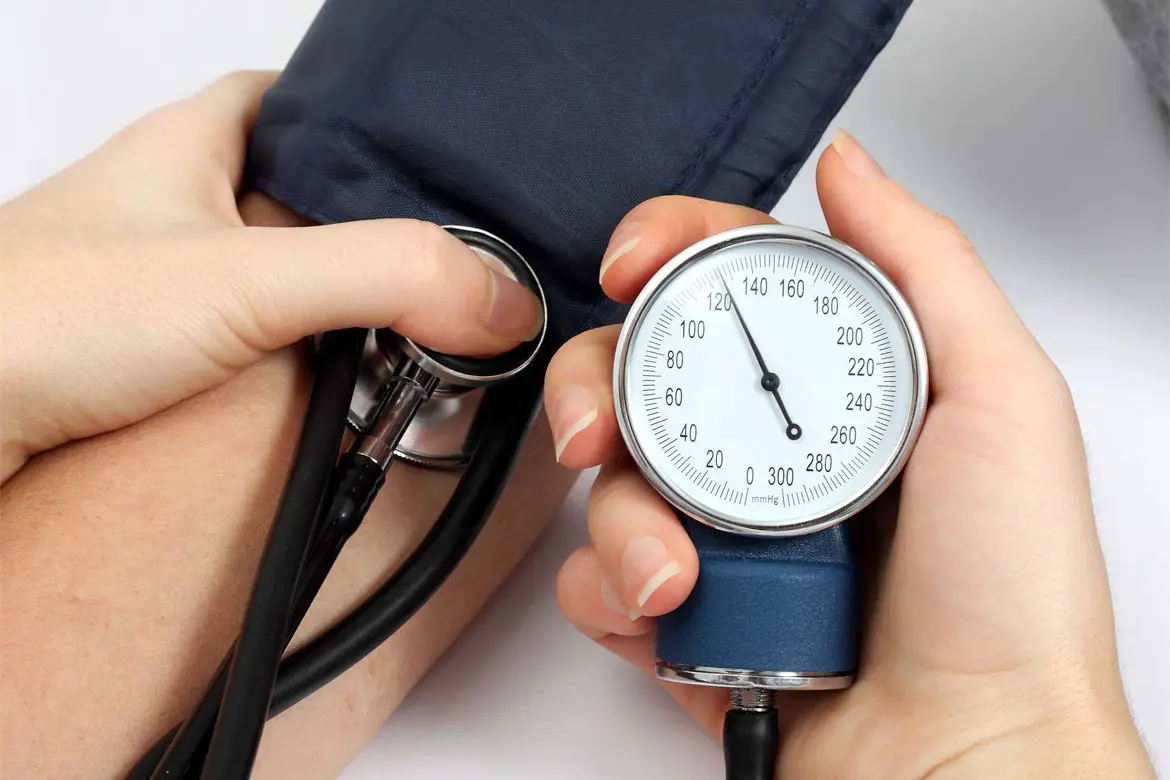
Hypertension, commonly known as high blood pressure, is a condition that affects millions of people worldwide and plays a significant role in global health. Often dubbed the “silent killer,” hypertension can lead to serious health complications without presenting noticeable symptoms, making awareness and education vital. In this blog, we will explore some intriguing facts about hypertension, from its prevalence and economic impact to demographic variations and regional disparities. Understanding these aspects can empower individuals to take charge of their health and seek effective strategies for prevention and management. Join us as we delve into the fascinating world of hypertension and uncover the essential information that can help improve heart health and overall well-being.
Heart Attacks and Deaths: In 2020, over 805,000 Americans experienced a heart attack, a significant health crisis that underscores the prevalence of cardiovascular disease in the United States. Among these, nearly 700,000 individuals died from heart-related complications, highlighting the severe impact of heart disease on public health. The statistics reveal the urgent need for effective prevention and treatment strategies, as heart disease remains a leading cause of mortality, necessitating awareness and proactive management of risk factors like hypertension.
Projected Heart Disease Cases: By the year 2035, it is estimated that approximately 130 million people in the United States will be diagnosed with some form of heart disease. This projection indicates a troubling trend, suggesting that without significant changes in lifestyle and healthcare approaches, the burden of heart disease will continue to rise. Factors contributing to this increase include aging populations, sedentary lifestyles, and rising obesity rates, emphasizing the importance of early detection and intervention in managing cardiovascular health.
Diabetes and Heart Disease Risk: Individuals with type 1 diabetes face a heightened risk of developing heart disease, primarily due to the effects of chronic high blood sugar levels on vascular health. This increased risk is compounded by other factors such as hypertension, which is prevalent in diabetic populations. Effective management of blood glucose levels and regular monitoring of cardiovascular health are crucial for reducing the risk of heart disease in those with type 1 diabetes, highlighting the interconnected nature of these health conditions.
Hypertension and Stroke Risk: Hypertension, or high blood pressure, is recognized as the leading risk factor for strokes. Elevated blood pressure can damage blood vessels over time, making them more susceptible to rupture or blockage, which can lead to a stroke. This relationship underscores the importance of monitoring and managing blood pressure levels as a preventive measure against stroke, a condition that can have devastating effects on individuals and their families.
Definition of Hypertension: Hypertension is defined as a medical condition where a person exhibits persistently high blood pressure, typically measured in millimeters of mercury (mmHg). Blood pressure readings consist of two numbers: systolic (the pressure during heartbeats) and diastolic (the pressure between beats). A reading of 130/80 mmHg or higher is generally considered hypertensive. Understanding this condition is crucial, as many individuals may remain unaware of their hypertension status without regular monitoring.
Consequences of Hypertension: Hypertension significantly increases the risk of severe health complications, including heart attacks, strokes, and heart or kidney failure. Chronic high blood pressure can lead to the hardening and narrowing of arteries, reducing blood flow and increasing the workload on the heart. These effects can culminate in life-threatening conditions, making hypertension a critical health issue that requires ongoing management and lifestyle adjustments to mitigate risks.
Severity of Hypertension: According to recent data, 44% of individuals diagnosed with hypertension fall into the “stage 3” category, which represents the most severe form of high blood pressure. Stage 3 hypertension is characterized by readings of 180/110 mmHg or higher, indicating a significant risk for cardiovascular events. This statistic highlights the need for targeted interventions and education to manage and reduce blood pressure levels in affected populations.
Genetic Factors in Hypertension: Experts estimate that between 30% to 50% of the factors contributing to hypertension are genetic, suggesting a hereditary component to the condition. Family history can play a crucial role in an individual’s likelihood of developing high blood pressure, emphasizing the importance of awareness and proactive health monitoring for those with a familial predisposition to hypertension.
Influencing Factors: Various lifestyle factors influence an individual’s risk of developing hypertension, including diet, physical activity, alcohol consumption, weight, and emotional state. A diet high in sodium, low physical activity, excessive alcohol intake, obesity, and chronic stress can all contribute to elevated blood pressure levels. Understanding these factors can help individuals make informed choices to reduce their risk of hypertension.
Detection of Hypertension: Hypertension is often referred to as a “silent killer” because it typically does not present noticeable symptoms. The only reliable way to identify hypertension is through regular blood pressure measurements. Many individuals may be unaware of their condition until complications arise, underscoring the importance of routine health screenings and awareness of blood pressure levels.
Stress and Hypertension: Contrary to common beliefs, research has shown that stress and anger do not significantly increase the risk of developing hypertension. While emotional well-being is important for overall health, the primary contributors to hypertension are more closely related to lifestyle and biological factors. This understanding can help shift the focus toward more effective preventive measures and management strategies.
Sleep Apnea and Hypertension: Sleep apnea, a condition characterized by repeated interruptions in breathing during sleep, is associated with an increased risk of developing hypertension. The frequent drops in oxygen levels during sleep can lead to increased blood pressure and strain on the cardiovascular system. Individuals with sleep apnea often experience disrupted sleep patterns, which can further exacerbate hypertension. Recognizing and treating sleep apnea is crucial for managing blood pressure and reducing the risk of related health complications.
Hypertension and Brain Disease: Hypertension is linked to an increased risk of brain diseases, including cognitive decline and dementia. High blood pressure can damage blood vessels in the brain, leading to reduced blood flow and the potential for strokes, which can result in lasting neurological deficits. The relationship between hypertension and brain health emphasizes the importance of maintaining healthy blood pressure levels throughout life to support cognitive function and overall well-being.
Global Distribution of Hypertension: Approximately two-thirds of all adults with hypertension reside in countries classified as low to middle income. This statistic highlights the global health disparities in managing chronic conditions like hypertension, where access to healthcare, education, and resources may be limited. Understanding these disparities is essential for developing targeted public health strategies to address hypertension in vulnerable populations.
Undiagnosed Hypertension: It is estimated that nearly 50% of all cases of hypertension worldwide go undiagnosed, which poses a significant challenge for public health. Many individuals may be unaware of their condition due to a lack of symptoms or access to healthcare services. This underscores the importance of increasing awareness and promoting regular health screenings to identify and manage hypertension effectively.
Premature Death and Hypertension: Hypertension is one of the leading causes of premature death globally, contributing to a range of serious health conditions, including heart disease and stroke. The substantial mortality risk associated with unmanaged hypertension highlights the need for effective prevention and treatment strategies, as well as public health initiatives aimed at educating individuals about the importance of blood pressure management.
Control of Hypertension: Alarmingly, only 1 in 5 individuals suffering from hypertension have their condition under control. This statistic reflects the challenges faced in managing high blood pressure, including adherence to treatment plans, lifestyle changes, and regular monitoring. Improving control rates is crucial for reducing the health risks associated with hypertension and improving overall population health.
Regional Variations in Hypertension: In the United States, there are more cases of hypertension reported in Southern states compared to the Midwestern, Western, and Northern states. This regional variation may be influenced by factors such as socioeconomic status, access to healthcare, dietary habits, and lifestyle choices. Understanding these differences can inform targeted health interventions and resources to address hypertension in specific communities.
Increase in Global Cases: The number of hypertension cases worldwide nearly doubled from 1975 to 2015, indicating a significant public health challenge. This increase can be attributed to various factors, including urbanization, lifestyle changes, and an aging population. The growing prevalence of hypertension necessitates urgent action to promote healthier lifestyles and improve access to preventive healthcare services.
Prevention of Hypertension: Hypertension can often be prevented through lifestyle modifications, including reducing salt intake, limiting alcohol consumption, quitting tobacco use, increasing physical activity, and incorporating more fruits and vegetables into the diet. These changes can significantly lower the risk of developing hypertension and its associated health complications. Public health campaigns promoting these preventive measures are essential for reducing the overall burden of hypertension in the population.
Prevalence of Hypertension: Approximately 116 million Americans suffer from hypertension, a condition characterized by consistently elevated blood pressure levels. This statistic highlights the widespread nature of hypertension in the U.S., indicating that nearly half of all adults are affected by this silent yet serious health issue. Hypertension can lead to severe health complications, including heart disease, stroke, and kidney failure, making it a significant public health concern. The high prevalence underscores the importance of regular health screenings and lifestyle modifications to manage blood pressure effectively.
Economic Impact: Each year, hypertension-related medical costs in the United States amount to $131 billion. This staggering figure includes expenses related to hospitalizations, medications, and ongoing medical care for complications arising from uncontrolled hypertension. The financial burden on the healthcare system is immense, reflecting the need for effective prevention and management strategies. These costs also emphasize the importance of public health initiatives aimed at educating individuals about healthy lifestyle choices that can mitigate the risks associated with hypertension.
Demographic Variations: Research indicates that Hispanic adults have the lowest rates of hypertension compared to Black, non-Hispanic White, and Asian adults. This demographic variation in hypertension prevalence may be influenced by a variety of factors, including genetics, lifestyle choices, access to healthcare, and socioeconomic status. Understanding these differences is crucial for developing targeted interventions and health promotion strategies that address the specific needs of various communities, ultimately aiming to reduce the overall rates of hypertension across all demographic groups.
Regional Disparities: In the United States, hypertension is more prevalent in Southern states than in the Midwestern, Western, and Northern states. This regional disparity can be attributed to a combination of factors such as diet, physical activity levels, healthcare access, and socioeconomic conditions. The Southern diet, often high in sodium and low in fruits and vegetables, may contribute to higher blood pressure levels. Recognizing these regional differences is essential for public health officials to tailor their strategies and resources effectively, aiming to reduce hypertension rates in the most affected areas.
FAQs about Hypertension:
1. What is hypertension?
Hypertension, or high blood pressure, is a medical condition where the force of the blood against the walls of the arteries is consistently too high. Blood pressure readings are given in millimeters of mercury (mmHg) and are expressed with two numbers: systolic (the pressure when the heart beats) over diastolic (the pressure when the heart rests between beats). A normal blood pressure reading is typically around 120/80 mmHg. Hypertension is generally classified into two categories: primary (essential) hypertension, which develops gradually over time without a specific cause, and secondary hypertension, which can be attributed to an underlying condition such as kidney disease or hormonal disorders.
2. What are the symptoms of hypertension?
Hypertension is often referred to as a “silent killer” because it usually does not present noticeable symptoms. Many individuals may not realize they have high blood pressure until it leads to serious health issues. However, in some cases, people may experience symptoms such as headaches, shortness of breath, nosebleeds, or flushing. These symptoms are not specific to hypertension and may indicate a hypertensive crisis, which is a medical emergency. Regular monitoring of blood pressure is essential to detect hypertension early, especially for individuals at higher risk.
3. What causes hypertension?
The causes of hypertension can be categorized into two main types: primary and secondary. Primary hypertension has no identifiable cause and is thought to be influenced by a combination of genetic, lifestyle, and environmental factors, including age, obesity, lack of physical activity, high salt intake, and excessive alcohol consumption. Secondary hypertension is caused by specific underlying conditions such as kidney disease, hormonal disorders (like hyperaldosteronism), or certain medications. Identifying and addressing these underlying causes is crucial for effective management.
4. How is hypertension diagnosed?
Hypertension is diagnosed through regular blood pressure measurements taken using a sphygmomanometer. A healthcare professional will typically take at least two or more readings on different occasions to confirm a diagnosis. A reading of 130/80 mmHg or higher is generally considered indicative of hypertension. In some cases, additional tests may be conducted, such as blood tests, urinalysis, or imaging studies, to assess for any underlying conditions or complications associated with high blood pressure.
5. What are the risks associated with hypertension?
Hypertension poses several serious health risks if left untreated. It can lead to complications such as heart disease, stroke, kidney damage, vision loss, and metabolic syndrome. High blood pressure can damage the arteries, leading to atherosclerosis (hardening of the arteries), which increases the risk of heart attacks and strokes. Additionally, uncontrolled hypertension can strain the heart, leading to heart failure. Regular monitoring and management are essential to reduce these risks and maintain overall health.
6. How can hypertension be managed or treated?
Management of hypertension typically involves lifestyle changes and, in some cases, medication. Key lifestyle modifications include adopting a heart-healthy diet (such as the DASH diet), reducing sodium intake, engaging in regular physical activity, maintaining a healthy weight, limiting alcohol consumption, and managing stress. If lifestyle changes are insufficient, healthcare providers may prescribe antihypertensive medications, which can include diuretics, ACE inhibitors, beta-blockers, and calcium channel blockers, among others. Regular follow-up appointments are important to monitor blood pressure and adjust treatment as necessary.
7. Can hypertension be prevented?
While not all cases of hypertension can be prevented, many risk factors can be managed to reduce the likelihood of developing high blood pressure. Maintaining a healthy lifestyle is key: eating a balanced diet rich in fruits, vegetables, and whole grains, engaging in regular physical activity, avoiding tobacco use, managing stress, and maintaining a healthy weight can all contribute to better blood pressure control. Regular health check-ups can help identify risk factors early, allowing for timely intervention.









